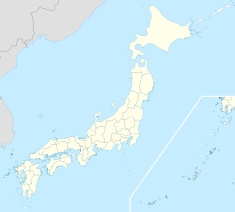Thousands Flee Earthquake-Hit Japanese Nuclear Plant
By RFE RL
(RFE/RL) — Thousands of people have been fleeing the region of a Japanese nuclear plant amid fears of widespread radiation contamination following the devastating earthquake and tsunami that has crippled the facility.
In another development, Japan’s Meteorological Agency has upgraded the magnitude of the March 11 quake to 9.0 — making it one of the biggest quakes ever recorded.
Japanese police also today said the death toll from the earthquake and tsunami that hit the country on March 11 is likely more than 10,000.
Go Sugawara, police spokesman for the northeastern city of Miyagi — one of the worst-hit areas — said today that 10,000 were feared dead in Miyagi alone, a higher figure than the reported country-wide death toll of about 900.
So far 379 people have officially been confirmed as dead in Miyagi, a city of some 2 million.

In the nuclear emergency, officials say there are high concerns that meltdowns, or catastrophic failures, may be occurring at two reactors at the Fukushima Daiichi nuclear power facility in northern Japan.
One reactor at the site suffered an explosion and radiation leak on March 12, and authorities say the cooling system has also failed at a second reactor at the site.
Officials say radiation levels have now surpassed legal limits at the plant.
The International Atomic Energy Agency, the United Nations’ nuclear watchdog, says more than 170,000 people have so far been evacuated from the region.
Japan’s nuclear safety agency has rated the March 12 explosion incident as a four on the one-to-seven International Nuclear And Radiological Event Scale. This would make it less serious than the Three Mile Island incident in the United States, which was rated a five, and Chornobyl in Ukraine, which was a seven.
The tsunami triggered by the earthquake has washed away whole villages and largely destroyed at least one town. Some 215,000 people have reportedly fled their homes.
Some 5.6 million households were left without electricity and more than one million were without water in quake-hit areas a day after the earthquake.
No Water
Fukushima resident Yoshikazi Yawatari said people want electricity, water and communications be restored in the area as soon as possible. “For the time being, I just want them to work on restoring things,” he said. “I don’t have any water and it’s horrible not being able to use the toilet.”
Japan’s military has mobilized thousands of troops, 300 planes and 40 ships to help with the relief effort.
Rescue team efforts from South Korea, New Zealand, and Singapore were due to arrive in Japan on March 12.
U.S. President Barack Obama mobilized the U.S. military to provide emergency aid for the disaster-hit country. A U.S. flotilla, including two aircraft carriers and support ships, were ordered to the disaster-hit region to provide aid. The United States has nearly 40,000 military personnel in Japan.
Some 50 countries so far offered help in search and rescue operations.
The earthquake has been followed by at least 50 aftershocks.
Despite the huge disruption, the natural disaster brought to Japan’s key industries, the country’s central bank vows to do utmost to ensure financial markets stability.
The Tokyo Stock Exchange said it will open for trading as normal on March 14.
Written by the RFE/RL’s central newsroom, with agency reports
